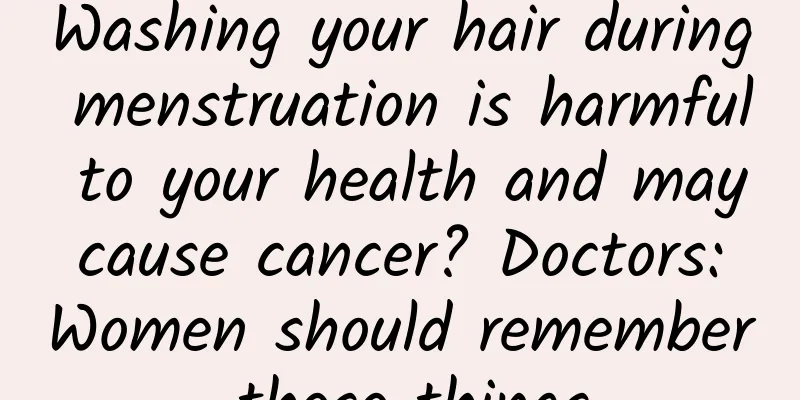Why is AIDS so difficult to treat? How significant is it that a female AIDS survivor has emerged?

|
In our understanding, AIDS is difficult to cure. Moreover, AIDS can be transmitted from mother to child, making the child sick. Regardless of how the disease is contracted, there are many people suffering from AIDS around the world. Of course, scholars have never stopped their research on AIDS, and a while ago, a latest report gave us hope for a successful cure for AIDS. Hope for a cure On February 15, 2022, medical experts from the University of California, Los Angeles, reported the world's first case of a female AIDS patient being cured at the 29th Conference on Retroviruses and Opportunistic Infections. This is the third AIDS patient to be cured after the "Berlin Patient" and the "London Patient." The female patient was diagnosed with HIV infection and AIDS in 2013, and four years later, she was diagnosed with acute myeloid leukemia. To treat this blood disease, the patient received a cord blood stem cell transplant in 2017. 27 months after receiving the stem cell transplant, the patient stopped all anti-HIV treatments, and as of the report, no signs of HIV infection have been detected in her body for 14 consecutive months. Image source: pexels Why did the HIV virus in the patient's body no longer run rampant after the umbilical cord blood stem cell transplant? Can stem cell transplantation cure AIDS? Obviously not, otherwise it wouldn't be so difficult to treat AIDS. The reason why the HIV virus in this patient was suppressed was mainly because the transplanted stem cells were special and had the CCR5-δ32 mutation. Ordinary stem cell transplants cannot treat AIDS. You must be asking, why can stem cells with CCR5-δ32 mutation treat AIDS? This requires us to understand the pathogenic mechanism of AIDS. The tough HIV virus AIDS is the abbreviation of acquired immunodeficiency syndrome (AIDS). The pathogen of this disease is the HIV virus (also known as the AIDS virus). Image source: pexels HIV is a retrovirus composed of RNA and protein, and its genetic material is RNA. When HIV invades a host, it needs to rely on receptors on the surface of host cells to enter the cell. These receptors include CD4 and CCR5 on the surface of T lymphocytes. HIV binds to these receptors, adsorbs to the cell surface, and enters the cell (mainly T lymphocytes) with the help of the receptors. Therefore, if the CCR5 gene in the cell mutates, resulting in a lack or change of the CCR5 receptor on the cell surface, it will cut off the way HIV invades the cell. The CCR5-δ32 gene mutation mentioned above is such a gene mutation that can prevent HIV from invading cells. A very small number of Nordic people are born with the CCR5-δ32 mutation gene, and are therefore immune to HIV. (Yes, this is the born lucky one) After HIV successfully enters the cell, its genetic material RNA is reverse transcribed into cDNA, and under the action of DNA polymerase, it forms a double-stranded DNA, which is then integrated into the human chromosome DNA. Through transcription and translation, the RNA and protein required for assembling progeny viruses are formed, and a large number of progeny viruses are assembled. When more and more viruses gather in the host cells, the cells are overwhelmed and lyse to release progeny viruses. The released progeny viruses continue to infect healthy T lymphocytes (and other target cells), eventually leading to the death of a large number of T lymphocytes in the human body. T lymphocytes are a very important type of immune cell. Their massive death means that the patient's immune system has been conquered by HIV. Naturally, the patient will be more susceptible to infection by various pathogens and more likely to develop tumors. (Other pathogens will be eliminated by the immune system after invading, while HIV directly attacks the immune system, which is really too difficult to deal with...) After HIV infection, it mainly exists in the patient's blood, semen, breast milk and other body fluids, and the main transmission routes are sexual transmission, mother-to-child transmission and blood transmission. The pathological mechanism of AIDS determines that this disease is difficult to cure. Image source: pexels Currently, the number of people infected with AIDS is increasing worldwide, of which more than 50% are female patients, but all previous cured cases were male. The first female AIDS patient cured in this report is of great significance. Image source: pexels At the same time, this case also suggests another possible treatment for AIDS: artificially using gene editing to create CD4 or CCR5 gene mutations (that is, using gene editing to modify the CCR5 gene and then transplanting it into AIDS patients). So, can this method of gene mutation + stem cell transplantation be used on a large scale to treat AIDS? Unfortunately, this treatment has significant limitations. For example, for AIDS patients who do not suffer from severe blood diseases, stem cell transplantation is costly and risky, and is not an ideal treatment option. In addition, stem cells with the CCR5-δ32 mutation are usually difficult to obtain and cannot be transplanted whenever you want. Image source: pexels In any case, the world's first female patient cured of AIDS has brought new hope to AIDS treatment research. It is hoped that one day in the future, AIDS can be easily cured. THE END Tadpole Musical Notation original article, please indicate the source when reprinting Editor/Heart and Paper |
<<: His name is written on the first line of the first page of Surgery.
Recommend
The "magic weight loss drug" can actually support an entire country. Do you know what the success rate of weight loss is?
The magic weight loss drug supports a country: in...
What effects do aerobic and anaerobic exercise have on cardiovascular health?
Maintaining cardiovascular health One of the impo...
When the phone rings, I get anxious instantly! Why are people more and more afraid of answering the phone?
Leviathan notes: "If you don't do bad th...
Bidding hosting: Summary of SEM bidding account issues
We often hear people complain that SEM promotion ...
What are some common marketing plans for Internet celebrity stores?
Nowadays, most people hear about and come into co...
Manufacturers face difficulties, but the domestic smartphone market is far from saturated
It is obvious that domestic smartphone manufactur...
Treating AI as a human? Wrong!
[Editor's Note] Human scientists and entrepre...
WeChat installation package has expanded 575 times in 11 years, and 98% of the files are garbage: Why is the size of the App getting bigger and bigger?
Recently, a blogger said that the Android APK ins...
How did you come up with the title? 7 steps, from conception to hit product!
How did you come up with the title ? Do you recei...
DeepSeek surpasses 30 million daily active users and becomes a domestic open source large model fully accessed by the three major operators
According to recent news, DeepSeek's usage ha...
Nuclear pollution panic! Is it prudent to stock up on salt like crazy? Revealing the correct way to choose salt scientifically!
Recently, due to the discharge of nuclear contami...
75% of patients are already in the middle or late stages when they are first diagnosed. Early screening for this cancer is very important!
Lung cancer, the world's leading cancer kille...
Beauty content marketing trends on Tik Tok, Kuaishou, and Xiaohongshu!
During Q2 2020, what new trends are there in cont...
Unable to resist the temptation, Japan's Rinnai has gone beyond the small and beautiful or top-heavy
Since the beginning of this year, Japan's Rin...
[Smart Farmers] Small insects, big harm - Bemisia tabaci
Alien species invasion is a global ecological pro...









